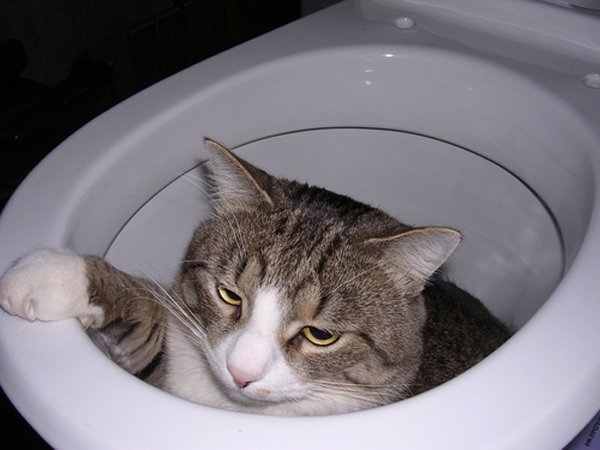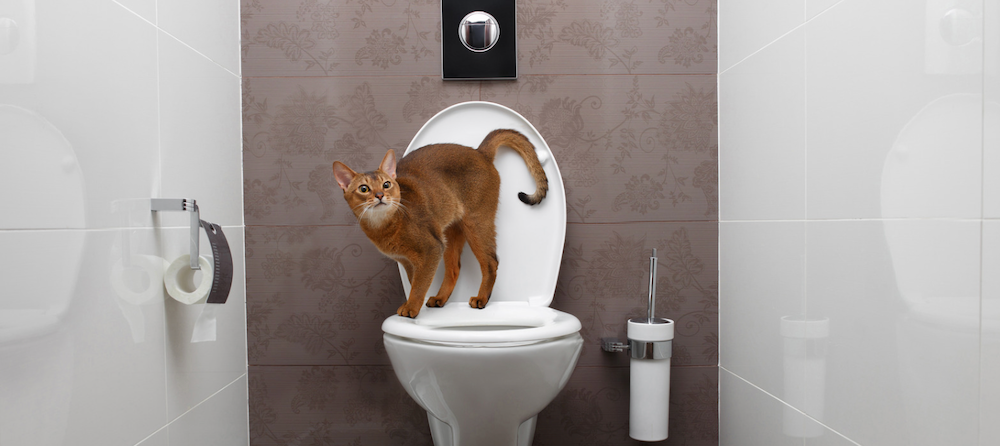Reasons You Should Avoid Flush Cat Poop Down Your Toilet - Important Information
Reasons You Should Avoid Flush Cat Poop Down Your Toilet - Important Information
Blog Article
In this article in the next paragraph you can find more awesome facts pertaining to How to Dispose of Cat Poop and Litter Without Plastic Bags.

Intro
As feline proprietors, it's important to be mindful of just how we get rid of our feline pals' waste. While it may appear hassle-free to flush feline poop down the commode, this practice can have harmful consequences for both the atmosphere and human health and wellness.
Environmental Impact
Flushing cat poop presents dangerous microorganisms and parasites right into the water system, positioning a significant threat to aquatic ecological communities. These pollutants can negatively influence marine life and compromise water high quality.
Health and wellness Risks
In addition to ecological issues, purging pet cat waste can also present health dangers to human beings. Feline feces might contain Toxoplasma gondii, a parasite that can create toxoplasmosis-- a possibly severe health problem, specifically for pregnant ladies and people with damaged immune systems.
Alternatives to Flushing
Luckily, there are safer and much more accountable means to dispose of cat poop. Think about the complying with choices:
1. Scoop and Dispose in Trash
One of the most usual approach of dealing with cat poop is to scoop it into a naturally degradable bag and throw it in the trash. Be sure to use a dedicated clutter scoop and dispose of the waste without delay.
2. Usage Biodegradable Litter
Select naturally degradable cat litter made from products such as corn or wheat. These trashes are environmentally friendly and can be securely taken care of in the garbage.
3. Bury in the Yard
If you have a lawn, take into consideration burying pet cat waste in an assigned area far from vegetable yards and water sources. Make certain to dig deep sufficient to stop contamination of groundwater.
4. Set Up a Pet Waste Disposal System
Buy an animal garbage disposal system specifically made for cat waste. These systems utilize enzymes to break down the waste, reducing odor and ecological influence.
Conclusion
Accountable pet dog ownership extends beyond giving food and shelter-- it also includes appropriate waste monitoring. By avoiding purging cat poop down the toilet and choosing alternate disposal techniques, we can lessen our ecological impact and secure human wellness.
Why Can’t I Flush Cat Poop?
It Spreads a Parasite
Cats are frequently infected with a parasite called toxoplasma gondii. The parasite causes an infection called toxoplasmosis. It is usually harmless to cats. The parasite only uses cat poop as a host for its eggs. Otherwise, the cat’s immune system usually keeps the infection at low enough levels to maintain its own health. But it does not stop the develop of eggs. These eggs are tiny and surprisingly tough. They may survive for a year before they begin to grow. But that’s the problem.
Our wastewater system is not designed to deal with toxoplasmosis eggs. Instead, most eggs will flush from your toilet into sewers and wastewater management plants. After the sewage is treated for many other harmful things in it, it is typically released into local rivers, lakes, or oceans. Here, the toxoplasmosis eggs can find new hosts, including starfish, crabs, otters, and many other wildlife. For many, this is a significant risk to their health. Toxoplasmosis can also end up infecting water sources that are important for agriculture, which means our deer, pigs, and sheep can get infected too.
Is There Risk to Humans?
There can be a risk to human life from flushing cat poop down the toilet. If you do so, the parasites from your cat’s poop can end up in shellfish, game animals, or livestock. If this meat is then served raw or undercooked, the people who eat it can get sick.
In fact, according to the CDC, 40 million people in the United States are infected with toxoplasma gondii. They get it from exposure to infected seafood, or from some kind of cat poop contamination, like drinking from a stream that is contaminated or touching anything that has come into contact with cat poop. That includes just cleaning a cat litter box.
Most people who get infected with these parasites will not develop any symptoms. However, for pregnant women or for those with compromised immune systems, the parasite can cause severe health problems.
How to Handle Cat Poop
The best way to handle cat poop is actually to clean the box more often. The eggs that the parasite sheds will not become active until one to five days after the cat poops. That means that if you clean daily, you’re much less likely to come into direct contact with infectious eggs.
That said, always dispose of cat poop in the garbage and not down the toilet. Wash your hands before and after you clean the litter box, and bring the bag of poop right outside to your garbage bins.
https://trenchlesssolutionsusa.com/why-cant-i-flush-cat-poop/

We hope you enjoyed reading our piece about How to Dispose of Cat Poop and Litter Without Plastic Bags. Thank you for taking time to browse our blog. So long as you appreciated our blog posting please make sure you remember to share it. Thanks a lot for your time. Don't hesitate to check up our website back soon.
About This Report this page